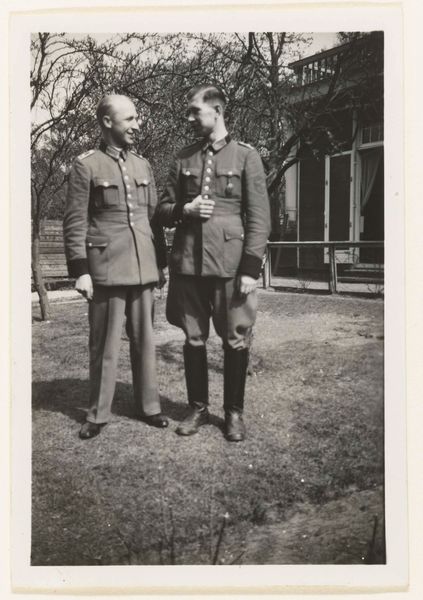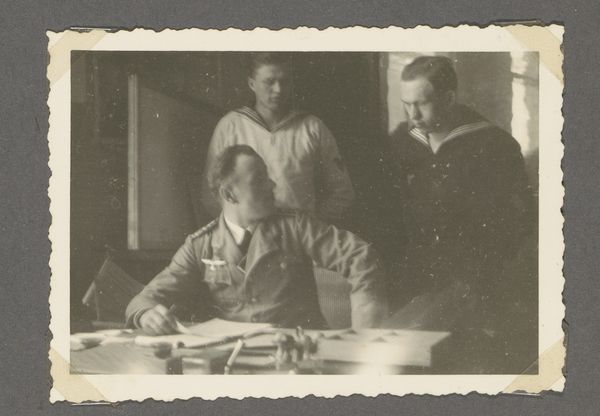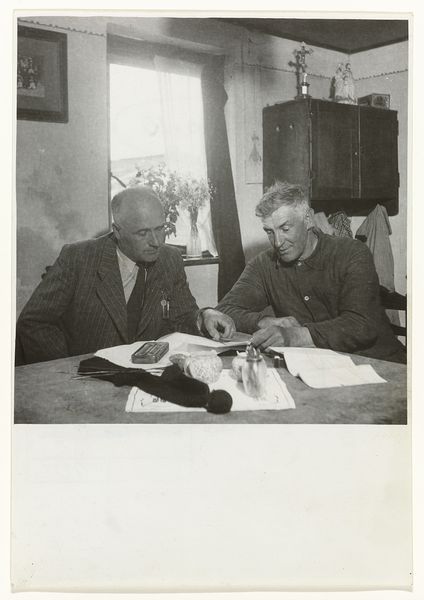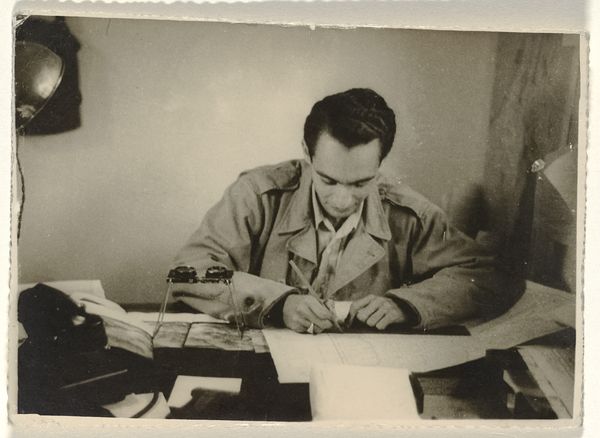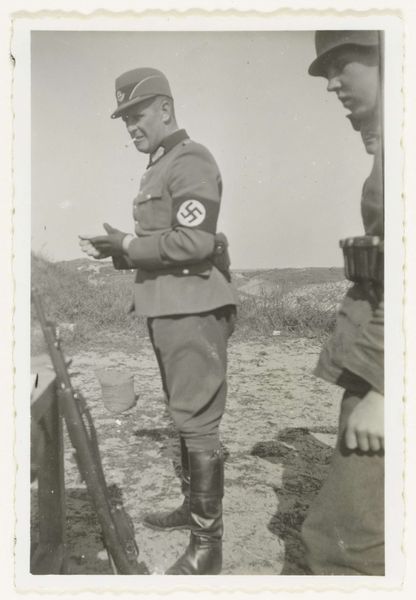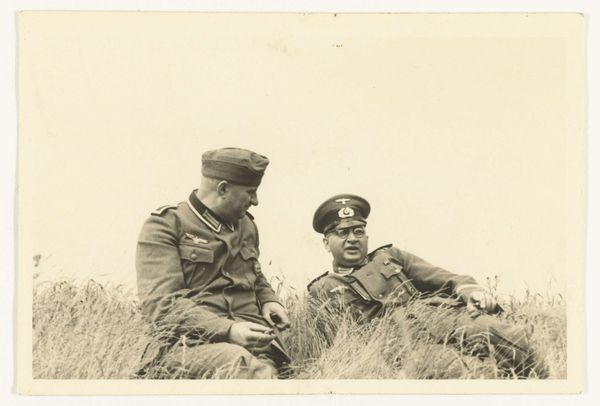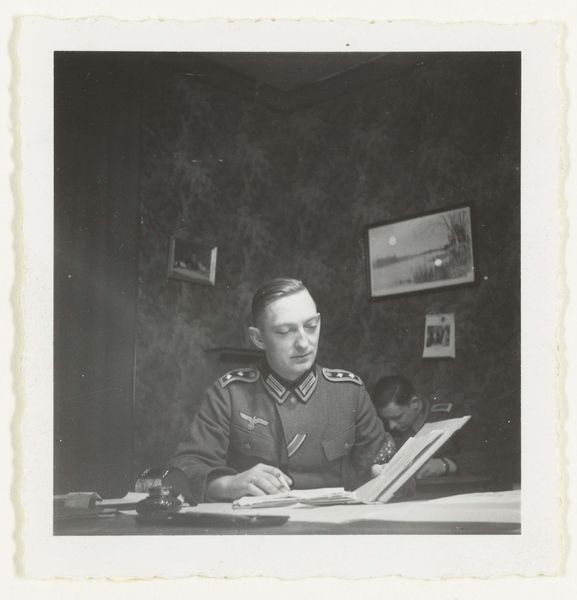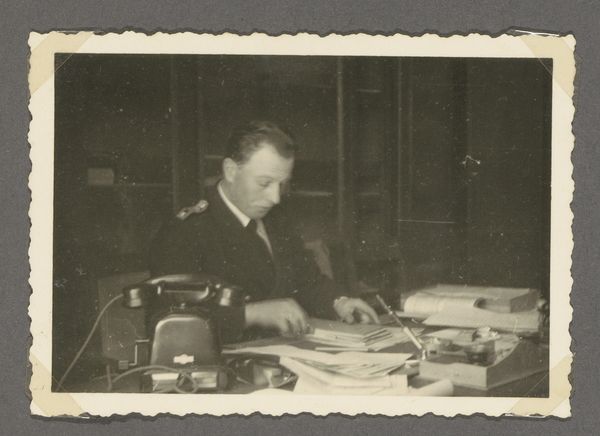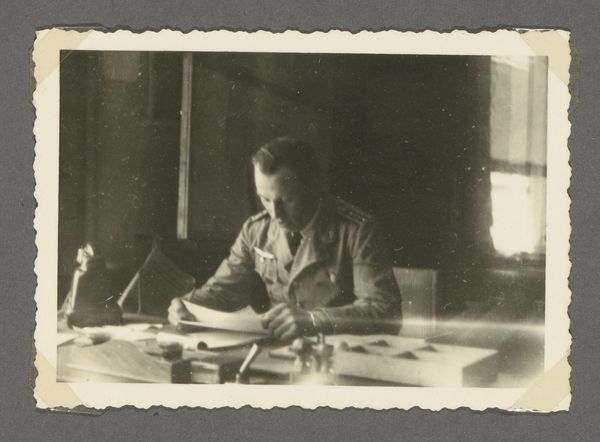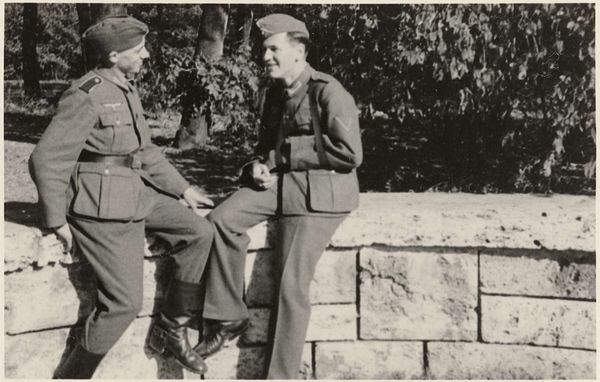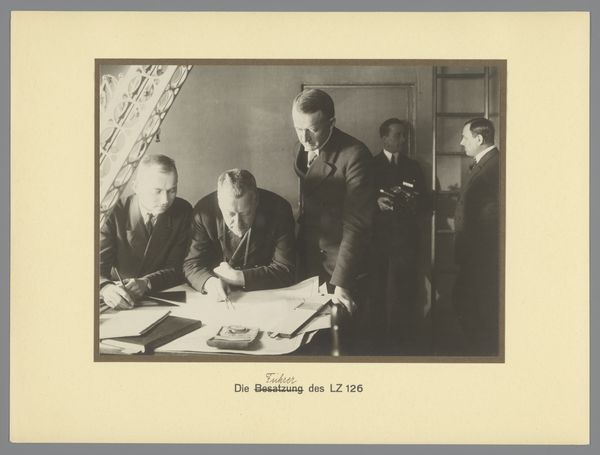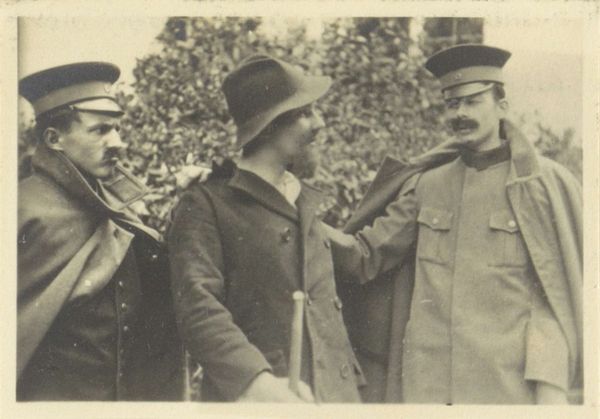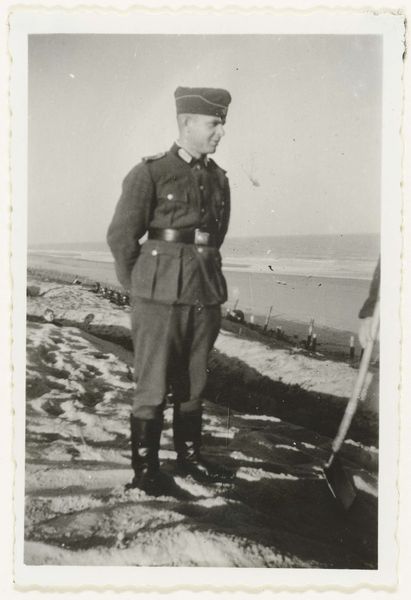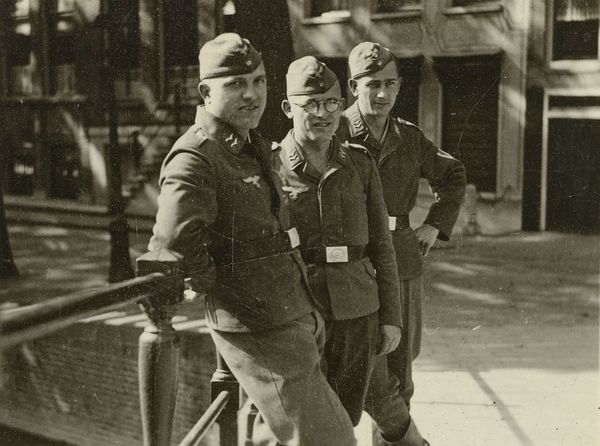
Twee journalisten corrigeren teksten in perscentrum te Neurenberg Possibly 1945
0:00
0:00
print, photography, gelatin-silver-print
#
portrait
#
print photography
# print
#
photography
#
historical photography
#
gelatin-silver-print
#
history-painting
#
realism
Dimensions: width 18 cm, height 19 cm
Copyright: Rijks Museum: Open Domain
Editor: This is "Twee journalisten corrigeren teksten in perscentrum te Neurenberg," or "Two Journalists Correcting Texts in the Press Center in Nuremberg," likely from 1945. It's a gelatin-silver print photograph currently housed at the Rijksmuseum. It has a somber and serious atmosphere; what stands out to you? Curator: What strikes me is the intense labor of language happening in the aftermath of immense trauma. These journalists in Nuremberg are not just correcting texts; they are, in a sense, constructing a narrative. The power dynamics are so important: who gets to write history? Who gets to decide what is true, and how is that truth then disseminated? What responsibility do journalists have in constructing this history? Editor: So, you’re focusing on the act of writing itself as a way of exerting power. But isn't there also a more straightforward documentation of a historical event? Curator: Yes, on one level, it's documentation. However, all documentation is filtered through a lens, through perspective. The choice of language, the framing of the narrative - these things are never neutral. We must consider the ethics embedded in these acts of creation. Even the presence of a cigar, here, it suggests an attempt to perform a certain masculinity, power, and control during a period defined by powerlessness of the defeated Nazi party. Editor: That’s fascinating. I hadn't considered the idea of narrative construction and its embedded power dynamics in such a direct way, but I understand what you mean. I suppose there's an immense burden in shaping a narrative of something like the Nuremberg trials. Curator: Exactly! By understanding the social context surrounding the photograph, it invites us to question the narratives we inherit and to become more critical readers, more critically thinking humans. Editor: I'll definitely think more deeply about perspective when viewing "historical" images from now on.
Comments
No comments
Be the first to comment and join the conversation on the ultimate creative platform.
